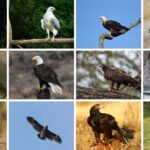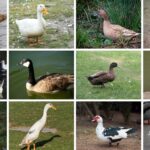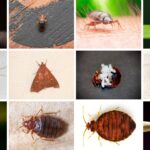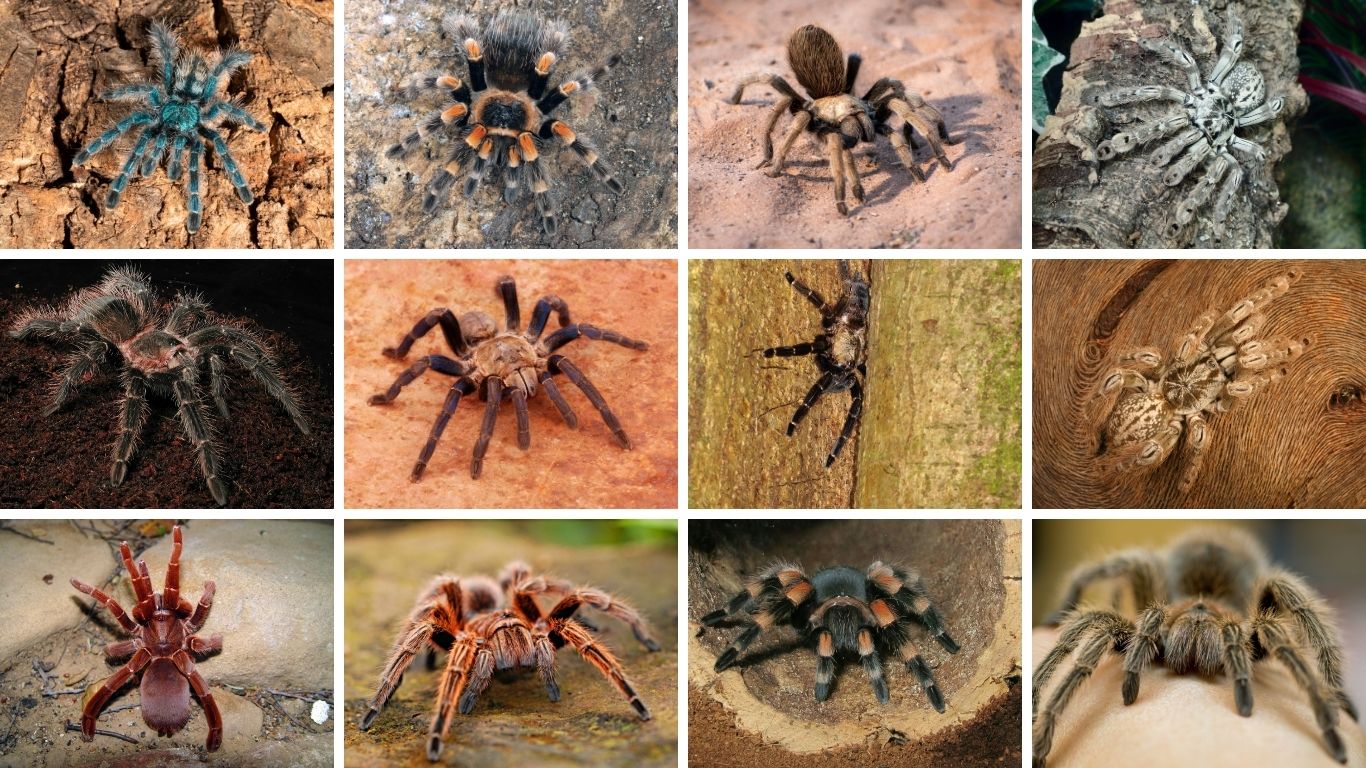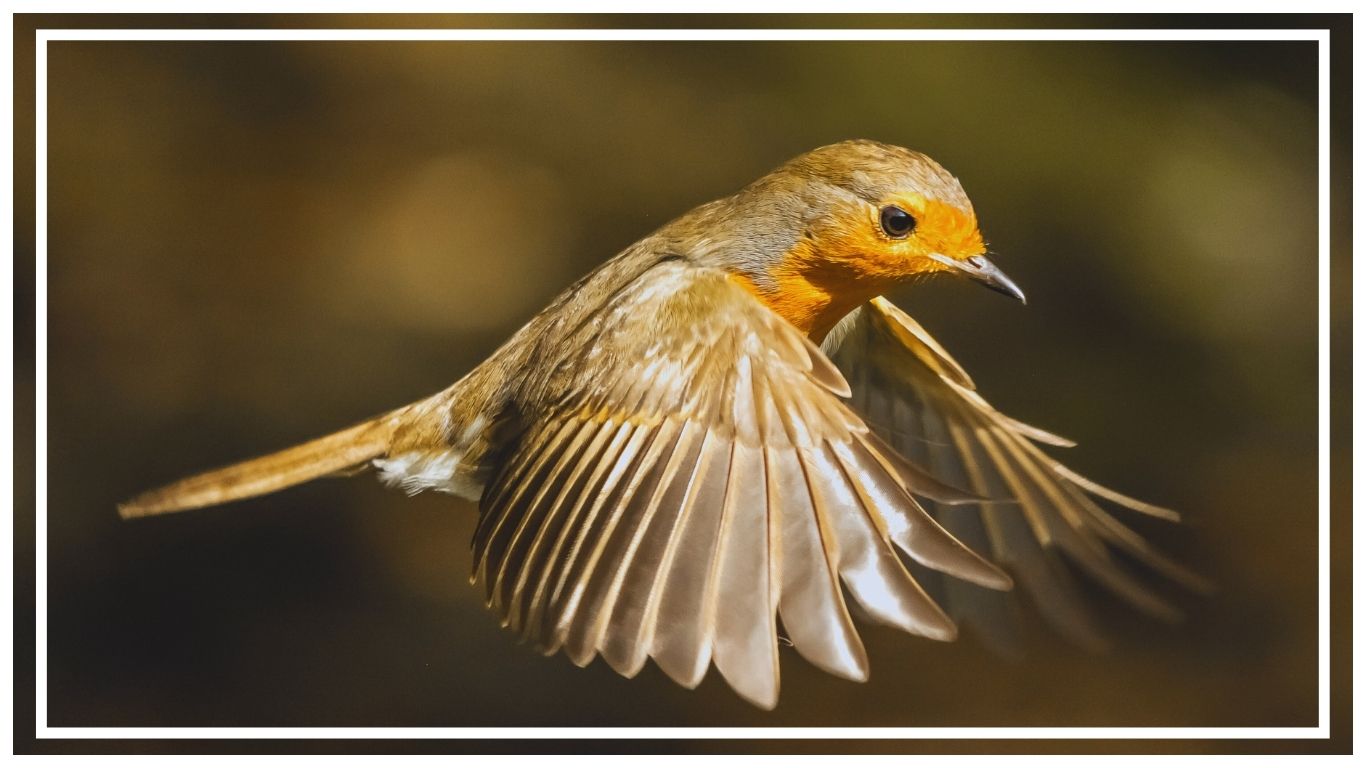Junco birds are small, sparrow-like songbirds known for their lively movements and crisp coloring. Commonly found across North America, they often visit backyards, forests, and open woodlands—especially during the colder months. While many people recognize the Dark-eyed Junco, there are actually several distinct types with subtle yet fascinating differences. In this guide, you’ll discover seven types of junco birds with easy identification tips, behavior insights, and image references to help you recognize each one in the wild or at your feeder.
1. Dark-eyed Junco
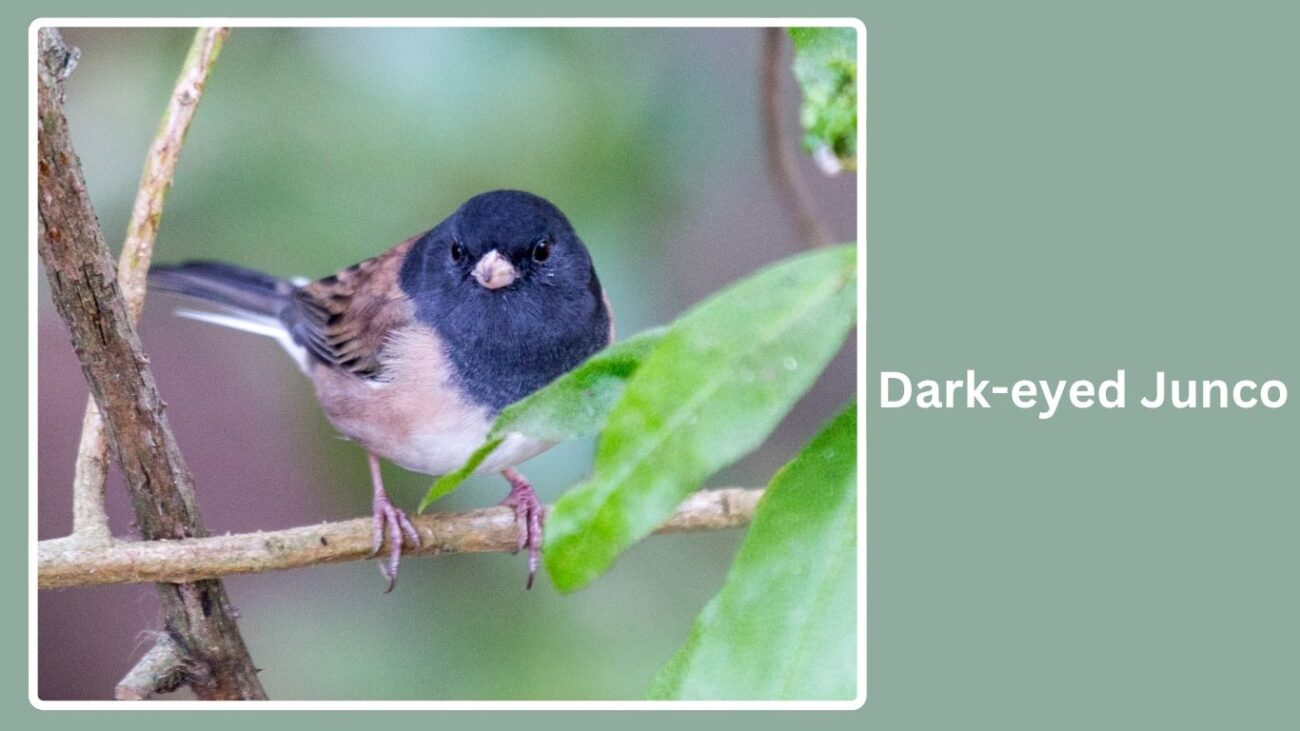
The Dark-eyed Junco is the most widespread and recognized member of the junco family. Often called “snowbirds” due to their winter appearance across much of the U.S., these birds are easy to spot thanks to their high-contrast plumage and ground-feeding behavior. Their color can vary slightly depending on region, but they always display a clean and tidy look, making them a favorite among backyard birdwatchers.
Identification
- Medium-sized sparrow, about 5–6.5 inches long
- Slate-gray body in males, with lighter tones in females
- White belly and outer tail feathers
- Small, pale pink bill
- Round head with a smooth, compact shape
Range & Habitat
Dark-eyed Juncos are found throughout North America. During the breeding season, they prefer coniferous or mixed forests in Canada, Alaska, and higher elevations in the U.S. In winter, they migrate to backyards, parks, fields, and woodlands across the continent. Their adaptability allows them to thrive in both wild and suburban areas.
Behavior & Calls
These birds spend most of their time foraging on the ground, hopping rather than walking, and often scratching at leaf litter to uncover seeds or insects. They are usually seen alone or in loose flocks. Their call is a sharp “tick-tick” sound, and the male’s song is a gentle, musical trill used to attract mates or defend territory during breeding season.
Image Reference

The image should highlight both a male and female Dark-eyed Junco side by side. Focus on the crisp gray body, pink bill, and white tail edges. A ground-feeding pose is ideal to capture their natural foraging behavior.
2. Oregon Junco
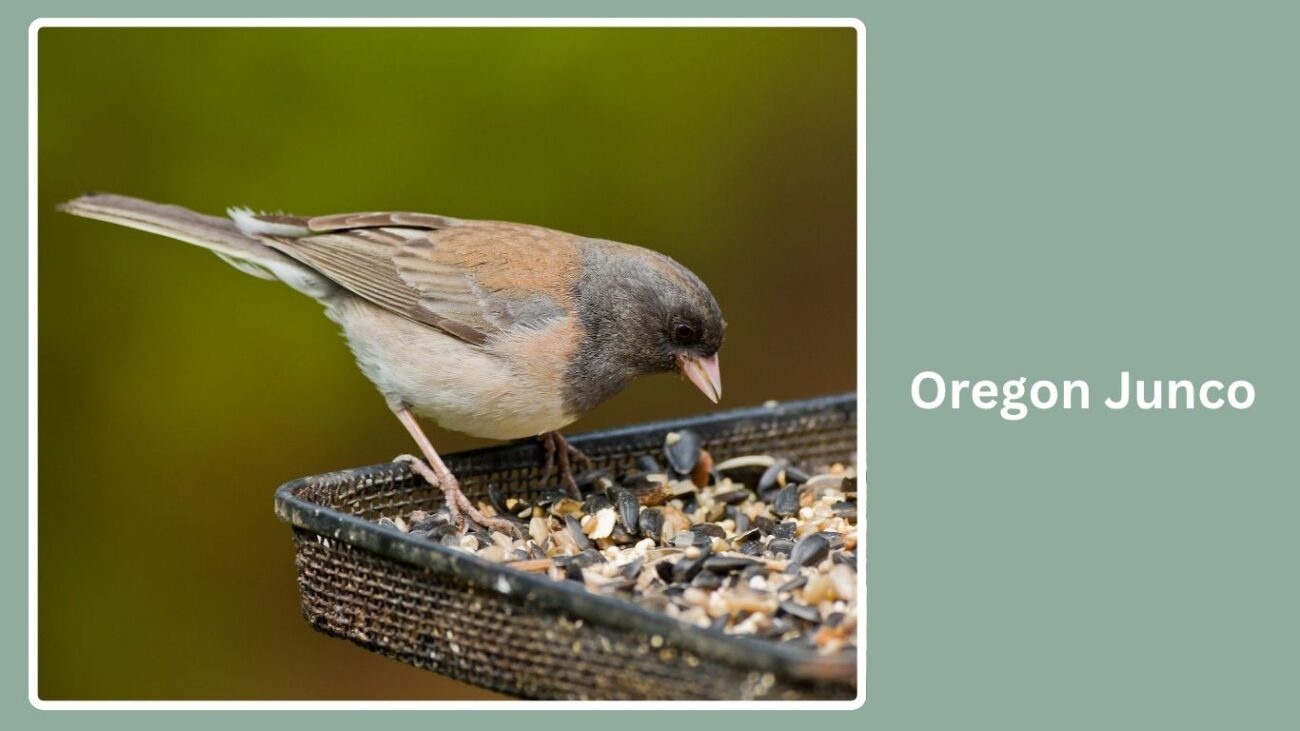
The Oregon Junco is a striking regional variation of the Dark-eyed Junco, known for its contrasting head and body colors. It’s especially common along the western regions of North America and is often the most colorful of the junco types. Its bold look and active personality make it a standout visitor in wooded areas and suburban backyards.
Identification
- Black or dark gray head
- Reddish-brown back and flanks
- White belly and outer tail feathers
- Light pink bill
- Males show stronger contrast; females appear slightly duller
Range & Habitat
Oregon Juncos are typically found along the Pacific Coast, from British Columbia down to California, and also in parts of the Rocky Mountains. They favor moist coniferous forests during breeding but will readily visit gardens, feeders, and forest edges in winter.
Behavior & Calls
Active and bold, Oregon Juncos are often seen hopping beneath shrubs or darting out to grab seeds. They may appear alone or in winter flocks with other juncos. Their call is a soft “tik” sound, and their song is a high-pitched, steady trill that’s easy to recognize if you’re familiar with backyard birds.
Image Reference
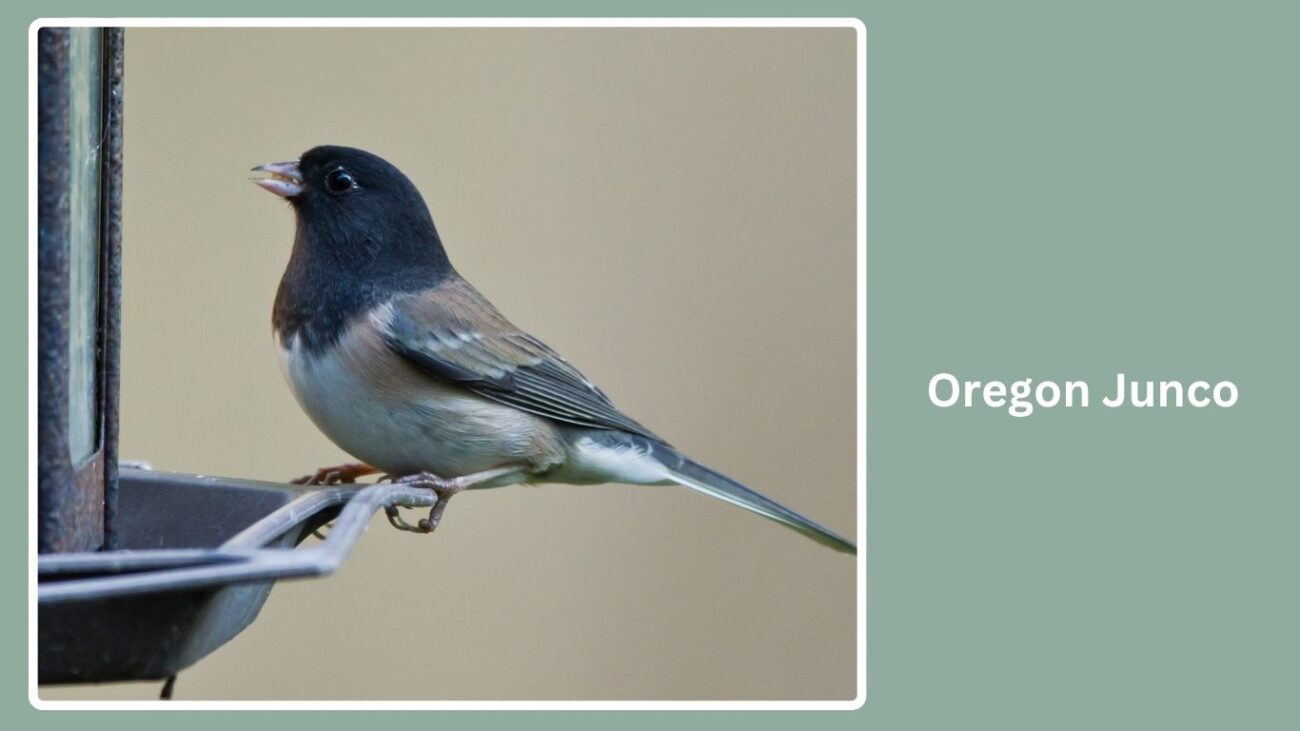
The image should focus on the bird’s sharp black hood, reddish sides, and clean white belly. A side profile perched on a branch or foraging on the ground best shows the distinct coloration pattern.
3. Slate-colored Junco

This type is considered the classic eastern variation of the Dark-eyed Junco. Its uniform gray appearance and wide winter range make it the most familiar junco to people living in the eastern and central U.S. It’s a frequent winter guest at feeders and snowy backyards.
Identification
- Entirely slate-gray body (males)
- Females have brownish tones mixed with gray
- Clean white belly and outer tail feathers
- Light pink beak
- Round head and short tail
Range & Habitat
Found primarily in eastern Canada and the northeastern U.S., the Slate-colored Junco breeds in boreal forests. During winter, it moves southward into open woods, fields, and suburban areas. It’s one of the most commonly reported birds during winter bird counts.
Behavior & Calls
Slate-colored Juncos are ground-feeders, often seen scratching through snow or under bushes. They are social in winter, forming small flocks, and display a fluttery, bouncy flight. Their song is a long trill, while the call is a simple “chip.”
Image Reference
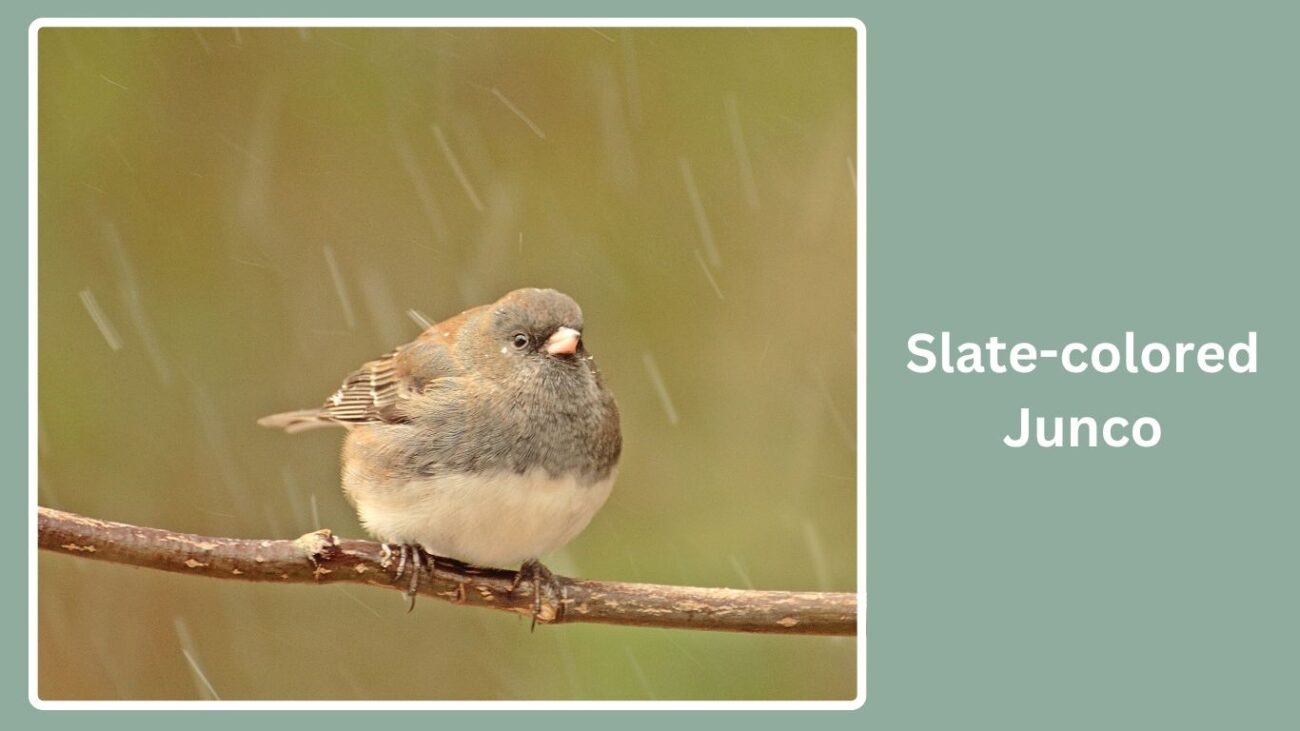
Use a front-facing or perched image showing the gray upper body fading into a clean white underside. Including both male and female together helps highlight the slight color variation between sexes.
6. Red-backed Junco
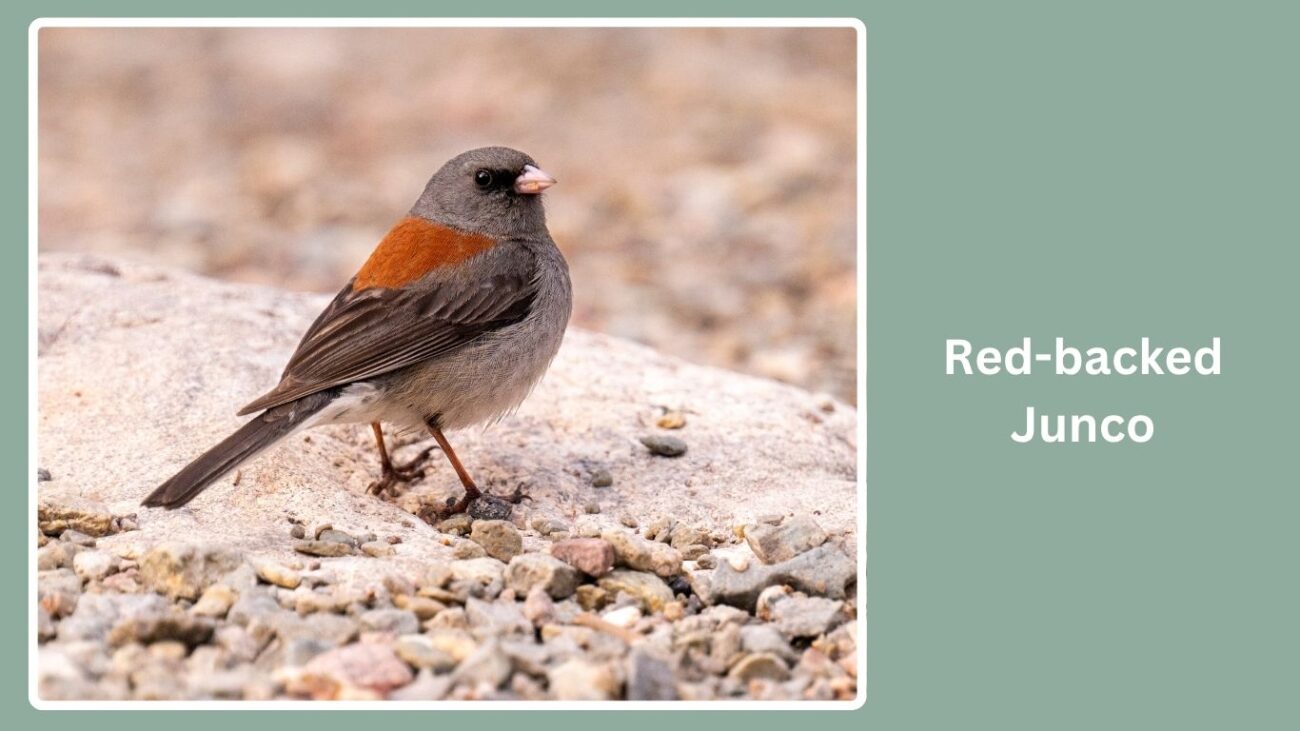
The Red-backed Junco is a unique and localized type of junco, easily identified by the reddish hue across its back and its soft gray tones elsewhere. Though it’s less common than other types, birders in the southwestern U.S. are occasionally lucky enough to spot one in high-elevation areas.
Identification
- Soft gray head, chest, and belly
- Rich, rusty-red back
- White outer tail feathers
- Pale bill
- Slightly darker area around the lores
Range & Habitat
The Red-backed Junco is mostly found in parts of Arizona and New Mexico, especially in mountain forests and mixed pine-oak woodlands. It tends to stay in higher elevations throughout the year, though it may descend slightly in colder months.
Behavior & Calls
This junco is more solitary during breeding season but joins flocks in winter. It forages low to the ground, hopping or darting beneath shrubs for seeds and insects. Its call is a short “tick” or “sip,” and its song resembles other juncos—a fast, musical trill.
Image Reference
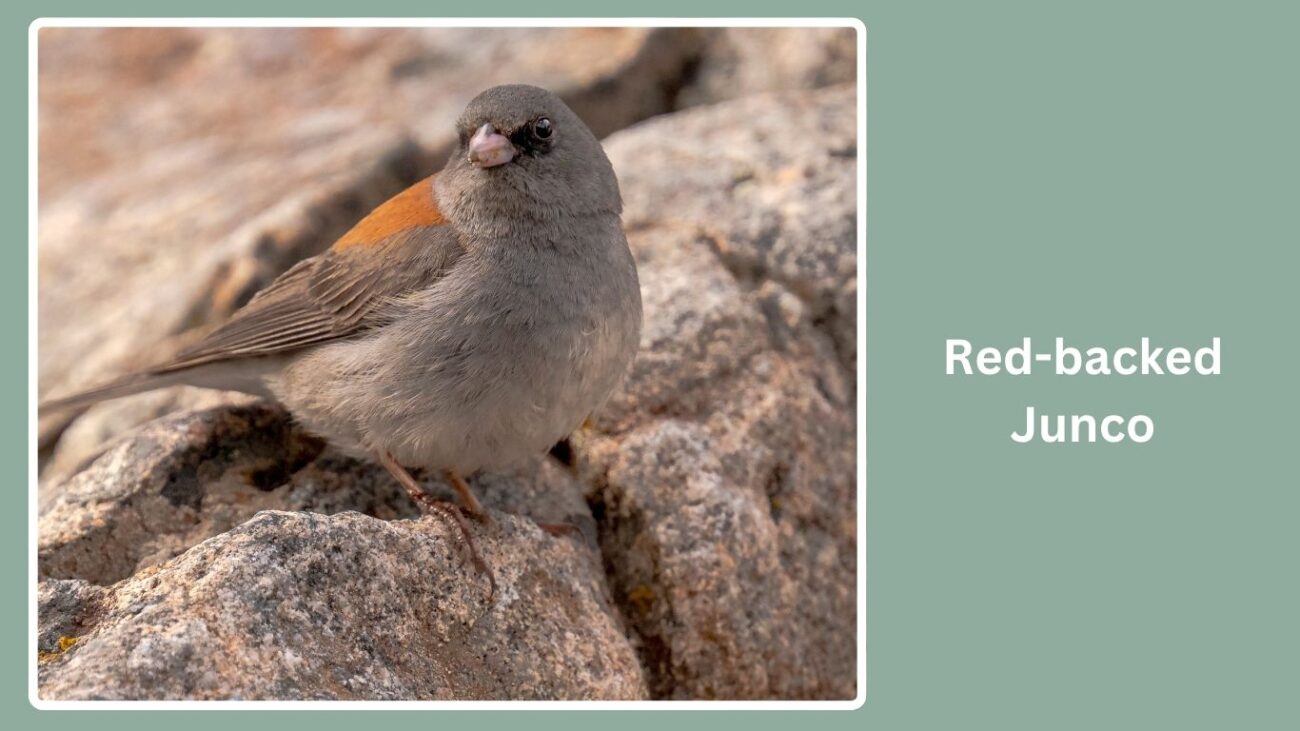
Use an image that shows the back clearly, emphasizing the contrast between the red back and gray head. A perched view from behind or above works best for this feature.
7. Yellow-eyed Junco
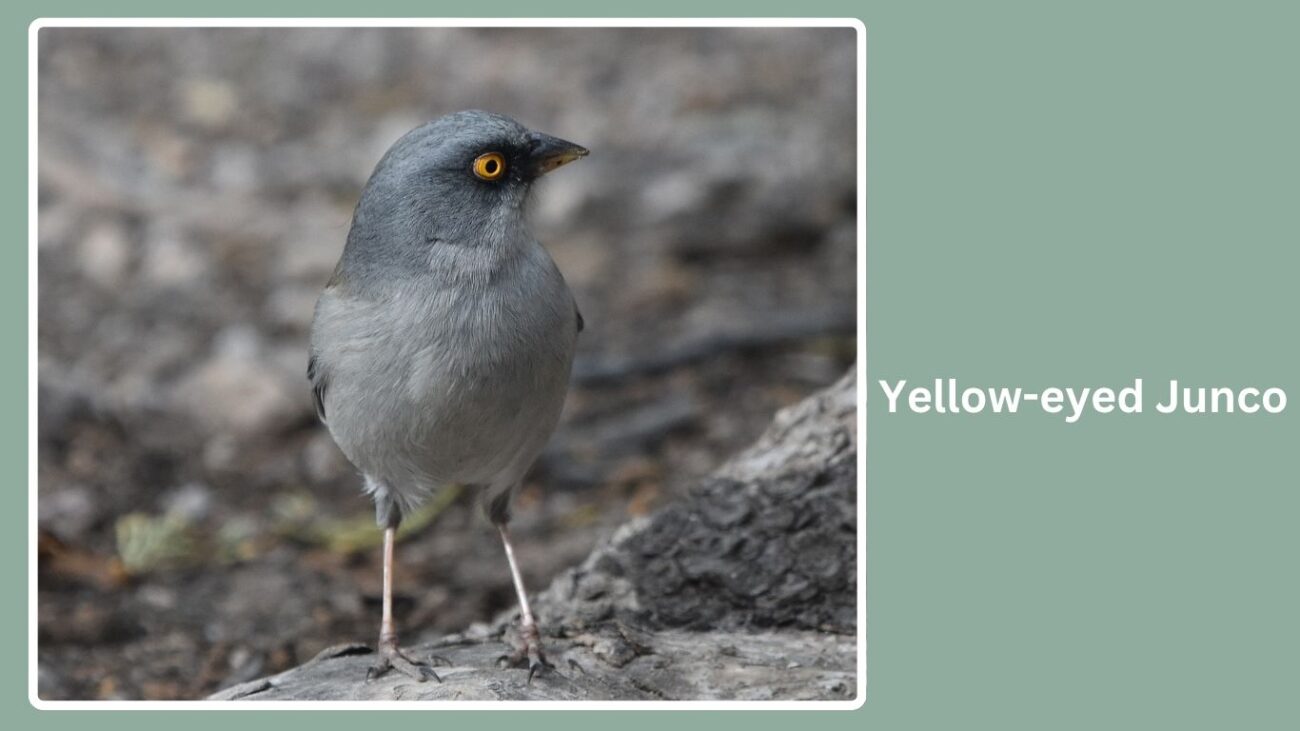
The Yellow-eyed Junco is perhaps the most visually distinct member of the junco group. Its pale body is accented by striking yellow eyes that stand out dramatically, giving it a more intense look than its cousins.
Identification
- Pale gray body and chest
- Reddish or rusty back and wings
- Bright yellow eyes
- Black lores and a darker head cap
- Black-tipped, conical bill
Range & Habitat
Primarily found in Mexico and parts of Central America, with a small population reaching southern Arizona. These birds prefer high-elevation pine and oak forests and are rarely seen outside of these regions.
Behavior & Calls
More elusive than other juncos, the Yellow-eyed Junco is quiet and cautious. It forages alone or in small groups and sings a soft, high-pitched trill. Its call is a dry “tsip” sound, often heard more than seen.
Image Reference
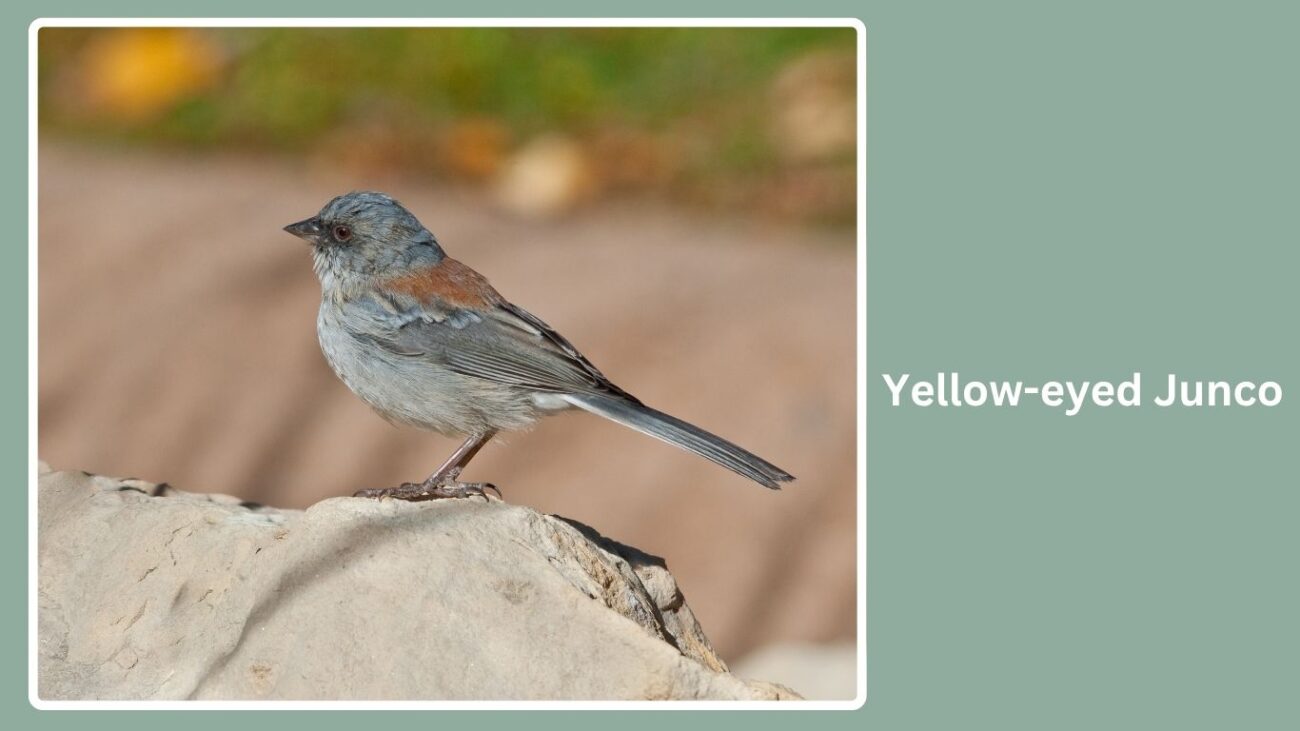
Choose a close-up that clearly shows the bird’s bright yellow eyes against its pale face and darker head cap. A side or front-facing headshot can best highlight this feature.
| Junco Type | Key Features | Region | Eye Color | Back Color |
| Dark-eyed Junco | Slate-gray body, white belly, pink bill | North America (widespread) | Dark | Gray or brown |
| Oregon Junco | Black head, brown flanks, white belly | Western U.S. | Dark | Brown |
| Slate-colored Junco | Uniform slate-gray (male), pink bill | Eastern U.S., Canada | Dark | Slate-gray |
| Pink-sided Junco | Gray head, pink flanks, brown back | Rocky Mountains | Dark | Brown |
| Gray-headed Junco | Light gray head, reddish back | Southwestern U.S. | Dark | Reddish-brown |
| Red-backed Junco | Gray body, rusty red back | Arizona, New Mexico | Dark | Red |
| Yellow-eyed Junco | Pale body, bright yellow eyes, dark lores | Southern Arizona, Mexico | Yellow | Rusty to reddish |
FAQs
1. Are all juncos the same species?
Not exactly. While many types like Oregon, Slate-colored, Pink-sided, and Gray-headed Juncos are considered subspecies of the Dark-eyed Junco (Junco hyemalis), others—like the Yellow-eyed Junco (Junco phaeonotus)—are separate species altogether.
2. Where can I see junco birds during winter?
Juncos are most visible in backyards, open fields, and woodland edges during winter, especially in the U.S. and southern Canada. They often appear at feeders, especially those offering seeds like millet or sunflower chips.
3. What do juncos eat?
Juncos primarily eat seeds, especially from weeds and grasses, but they’ll also consume insects during the breeding season. They forage mostly on the ground by hopping and scratching through leaf litter or snow.
4. How can I tell the difference between male and female juncos?
In most types, males have darker and more vibrant plumage, while females appear lighter or browner in color. The difference is especially noticeable in Slate-colored and Oregon Juncos.
Conclusion
Junco birds may seem similar at first glance, but each type has its own unique traits, colors, and regional preferences. From the familiar Dark-eyed Junco to the rare Yellow-eyed Junco, birdwatchers can enjoy spotting subtle differences in their plumage and behavior. Whether you’re observing them in snowy backyards or mountain forests, this guide helps you identify and appreciate the diversity among these charming little birds.


